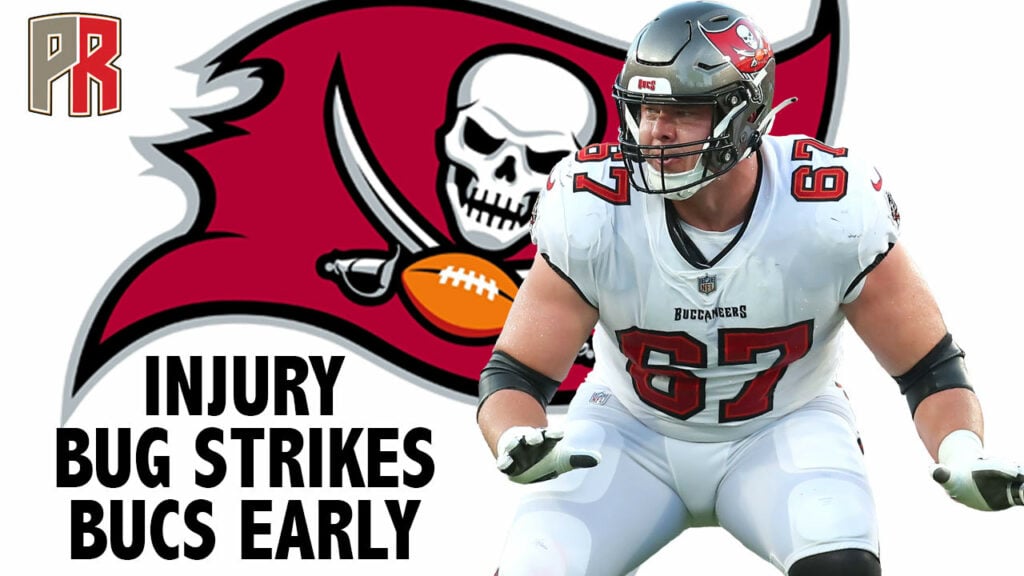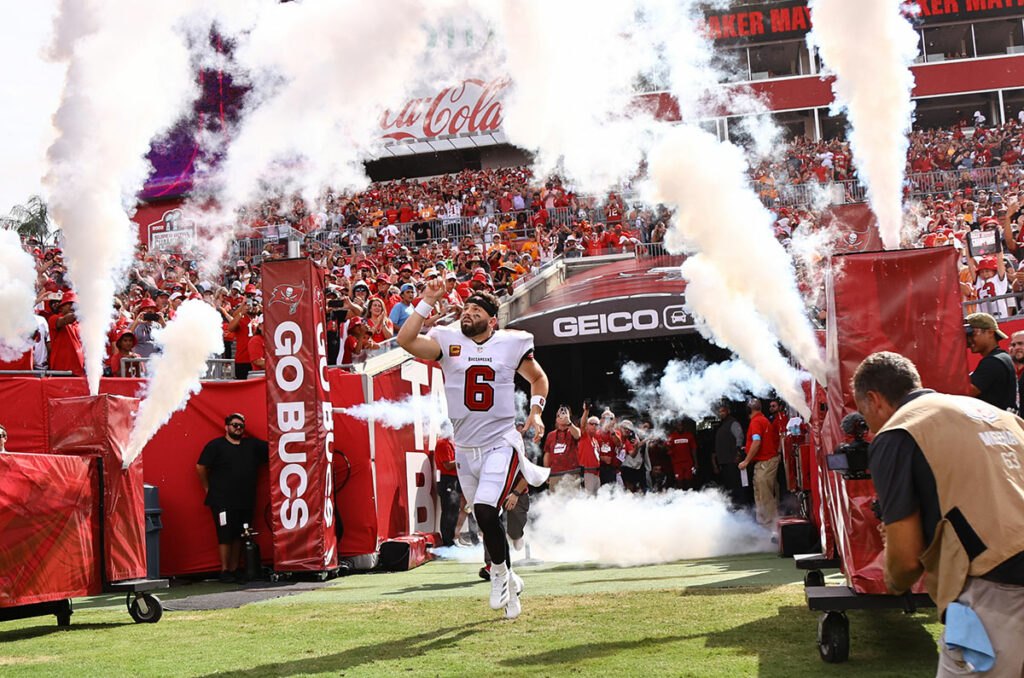The Bucs’ run game is better. But is it good?
And should it be led by Rachaad White or Bucky Irving?
In a game where quarterback Baker Mayfield threw for 289 yards and won FedEx Air Player of the Week there is still an awful lot of talk surrounding Tampa Bay’s ground game. The first half was disastrous, as the designed run game accounted for just 21 yards on 13 carries at a 1.6 yards per carry clip.
But the ground game came alive in the second half to the tune of 72 yards on 12 carries, averaging a very healthy 6.0 yards per attempt.
Yet when you look at the disparity by runner things sure don’t look good for White. He gained just 31 yards on 15 carries while Irving was cruising for 62 yards on just nine totes.
These surface level metrics can lead to a lot of narratives that don’t necessarily hold water past the sniff test. So, I thought I would look under the hood and explain why the run game improved in the second half and why the two Bucs running backs are a little closer in efficiency than you might think.
The Bucs’ (Zone) Run Game Was Bad On Sunday

Bucs OC Liam Coen and C Graham Barton – Photo by: Cliff Welch P/R
Without getting too into the weeds there are two primary run schemes in football. Zone runs are one of them. These typically are classified into four parts: outside, wide, mid and inside. The type of zone run is predicated by the initial aiming point of the running back.
All of the linemen and attached blockers, like tight ends and slot receivers, move in the same direction. Each player is responsible for picking up and passing off defenders who come into or flow out of their respective zones. The back then reads the blocks and defense in front of him and chooses the best gap to attack.
While zone is the foundational run scheme the entire Bucs offense is based off of, just as it was last year, the team did not run it particularly well in Week 1, just like last year. Pro Football Focus credited the Bucs with 12 zone runs on Sunday.
I personally charted them at 15. Based on my charting Tampa Bay gained just 18 yards on those runs for a yards per carry average of just 1.2.
The Bucs’ (Gap) Run Game Was Good On Sunday
The other primary run scheme is gap. Gap is more clearly defined in the assignments for linemen, asking them to move less and double team more with the running back attacking a predefined path.
Here is where Tampa Bay excelled, as I charted them for 70 yards on eight carries (8.75 yards per carry).
The Bucs’ backfield duo split those carries almost evenly with Bucky Irving gaining 50 yards on four carries to Rachaad White’s 25 yards on five carries. Both running backs hit their biggest runs of the game off of gap calls with Irving popping for 31 yards on a crunch run and White hitting a 15-yarder off of power.
As you can see by the split, gap-based runs are more of a side-dish to the main course that is the zone run scheme.
Bucs Ran Zone Heavier In Two Specific Ways, Defining Some Narratives
Tampa Bay didn’t really get better at running in the second half. And while Bucky Irving did out-produce Rachaad White on an efficiency basis, it wasn’t nearly as much as it might seem at first blush. Let’s start with the disparity in production by half.
The Bucs ran zone eight times in the first half for a grand total of three yards. A full third of those carries went for a loss while another third would be considered a “success.” It was an extremely hit-or-miss affair with the hits being minor and the misses being drive-stallers. But on their four gap runs they gained 18 yards with no negative plays and a success rate of 50%.
Fast forward to the second half of the game and you see a shift in the scheme mix. The zone runs went down from nine to six while the gap runs went up from four to five. The mix shift went from 67% zone in the front half of the game to 45% in the back half. This helped spring the improvement in the run game mightily.
Bucky Irving Saw A Better Mix Of Gap Than Rachaad White

Bucs RB Bucky Irving – Photo by: Cliff Welch/PR
Of Bucky Irving’s nine carries, four were gap and five were zone. Thats a 44% gap rate.
Rachaad White got 10 zone runs to just five gap calls. His gap rate was 33%.
Irving averaged 2.4 yards per carry in zone and 12.5 yards per carry in gap. White was 0.6 yards per carry in zone and 5.0 yards per carry in gap.
Now, I will readily admit Irving still comes out ahead in every facet, but my larger point is both runners did well in gap because the blocking was better all-around on those calls than on zone runs.
And beyond that, no decisions on who should be starting should be made off of a sample size of less than 20 for each player.
Looking At The Bucs’ Zone Scheme From 30,000 Feet

Bucs OC Liam Coen and QB Baker Mayfield – Photo by: Cliff Welch/PR
If the Bucs are just better at running gap than zone the natural question that comes forth is, “Why not just run more gap and less zone?”
Looking at the bigger picture you have to consider the marriage of the run and pass games. Since the mid zone run is the foundational piece of the offense a lot of the playbook flows from it. And that includes the Bucs’ play-action game. Tampa Bay ran four play-action calls on Sunday. All were action off of a mid-zone run.
Play-action off of zone opens up the Bucs’ bootleg and half-boot programs. If they don’t show a lot of zone, they lose some of the play-action effectiveness with it.
Holistically, it is important for the team to continue to use zone for the continuity of the entire offensive system. I would encourage you to look at the zone scheme with the play-action element added to it.
Adding those in you get a portion of the offense that accounted for 63 yards on 19 plays. That still isn’t great, but it should improve going forward as I expect the play-action game to increase and the overall run blocking to improve.
Josh Queipo joined the Pewter Report team in 2022, specializing in salary cap analysis and film study. In addition to his official role with the website and podcast, he has an unofficial role as the Pewter Report team’s beaming light of positivity and jokes. A staunch proponent of the forward pass, he is a father to two amazing children and loves sushi, brisket, steak and bacon, though the order changes depending on the day. He graduated from the University of South Florida in 2008 with a degree in finance.




